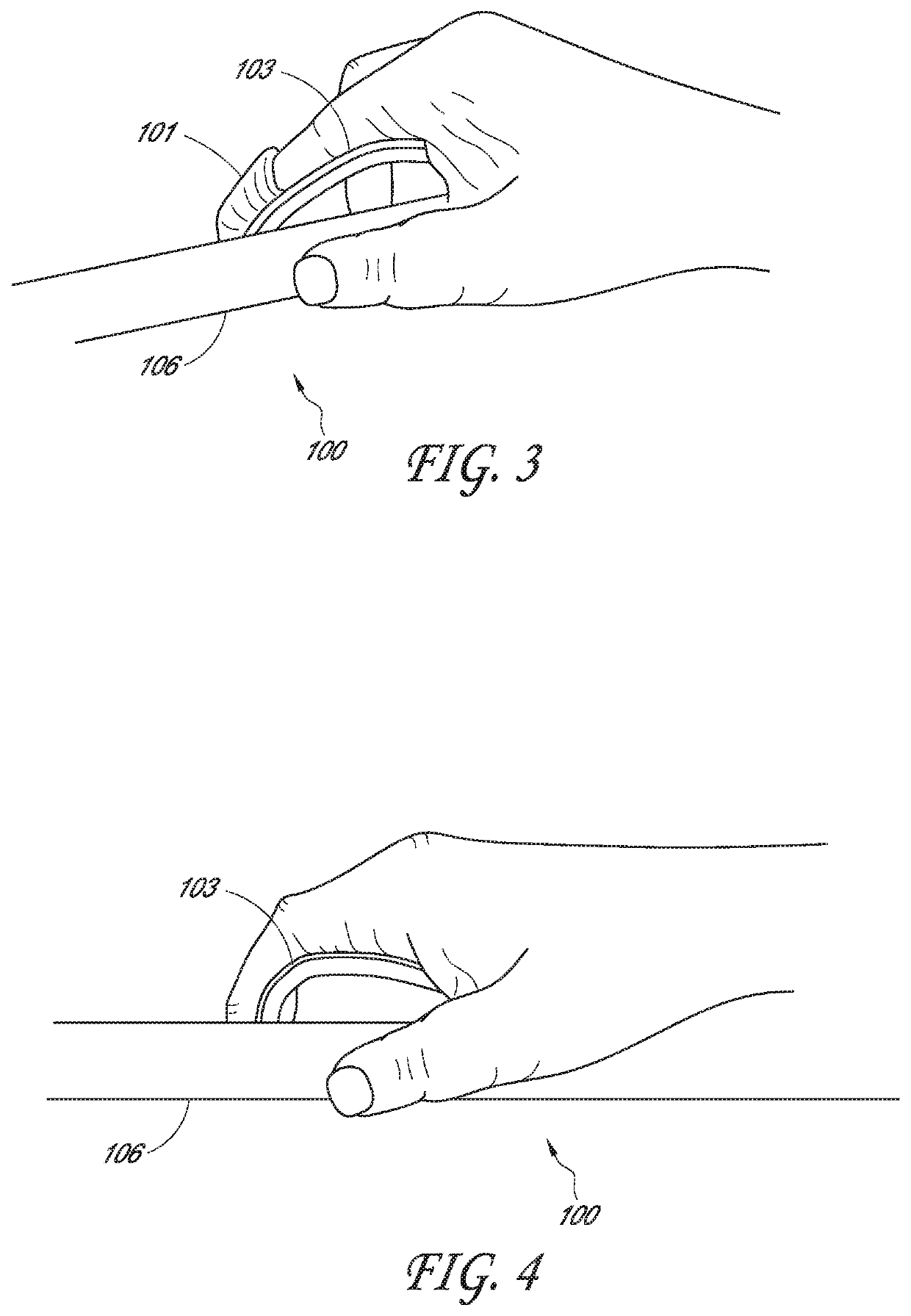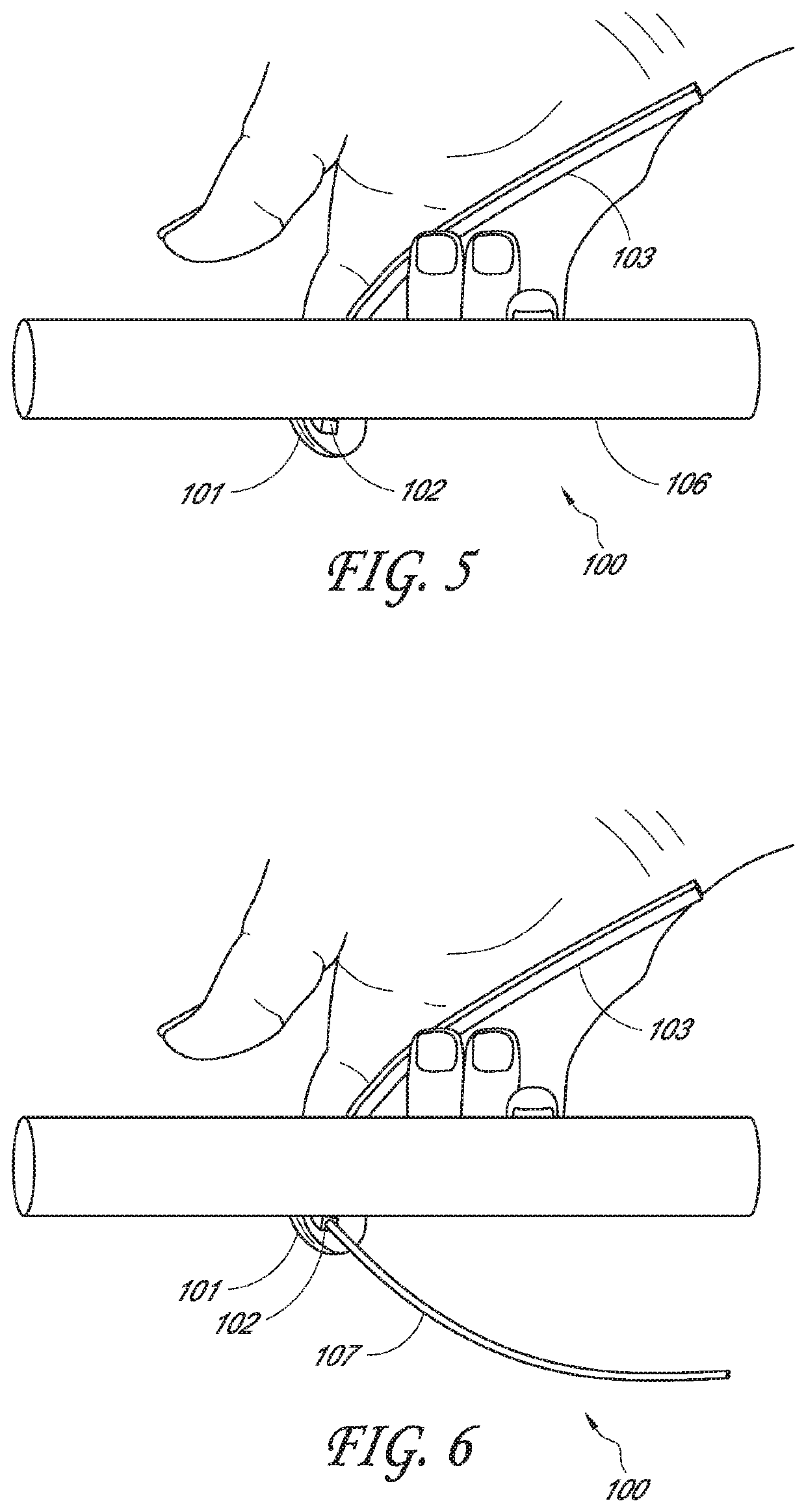Tactile cerclage wire and cable passer and methods of use
a technology of cerclage wire and cable, applied in the field of medical applications, can solve the problems of conventional cerclage passers associated with morbidity/complication, soft tissue prevents adequate tightening of wires or cables, and interposition of soft tissue poses a safety risk, so as to increase the flexibility of the appendage guide and reduce the thickness
- Summary
- Abstract
- Description
- Claims
- Application Information
AI Technical Summary
Benefits of technology
Problems solved by technology
Method used
Image
Examples
Embodiment Construction
[0019]Cerclage devices for passing a wire or cable around a bone have been in surgical practice for many years. Many of these devices are rigid “C” or “S” shaped tubes with a handle. These can be clumsy and difficult to use because of their rigidity. In order to accommodate large and small bones, they have a much larger radius of curvature than the bone and they are, therefore, difficult to keep the tip close to the bone to avoid soft tissue interposition. If the cerclage passer has a small arc, it can tend to trap soft tissue because it may not be able to reach all the way around the bone. If the cerclage passer has a large arc, it may have to be turned sideways, parallel to the length of the bone to get started around the bone, requiring a more extensive dissection.
[0020]Other forms of passers incorporate minimally invasive devices which can depend on a coil of wire, tube, or a spring plate to conform to the shape of the bone as it is passed into the wound. These devices may have ...
PUM
 Login to View More
Login to View More Abstract
Description
Claims
Application Information
 Login to View More
Login to View More - R&D Engineer
- R&D Manager
- IP Professional
- Industry Leading Data Capabilities
- Powerful AI technology
- Patent DNA Extraction
Browse by: Latest US Patents, China's latest patents, Technical Efficacy Thesaurus, Application Domain, Technology Topic, Popular Technical Reports.
© 2024 PatSnap. All rights reserved.Legal|Privacy policy|Modern Slavery Act Transparency Statement|Sitemap|About US| Contact US: help@patsnap.com










